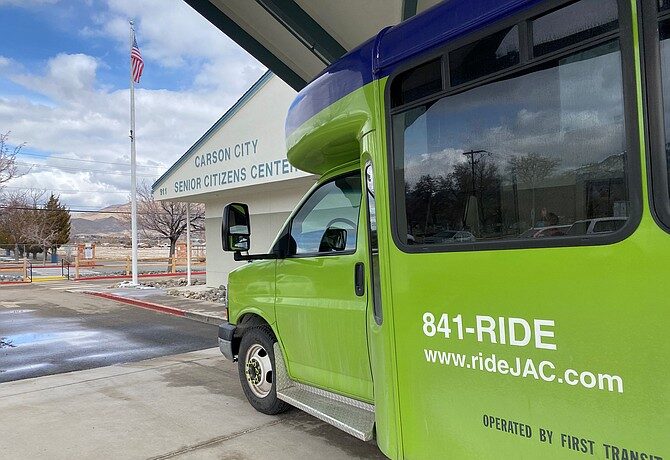In breaking down CAMPO funding for the CAMPO board on Jan. 10, Carson City Transportation Manager Chris Martinovich discussed what can and cannot be done with federal funding, as did Mayor Lori Bagwell who sits on the CAMPO board.
The item was for discussion only. Bagwell noted CAMPO operates regionally with the federal funds it receives every year.
“Those that give us the money put a whole bunch of rules and strings on it and tell us you can only use it for this and that,” Bagwell said.
The Carson Area Metropolitan Planning Organization (CAMPO) oversees transportation planning for Carson City, northern Douglas County and western Lyon County.
“The U.S. Census Bureau designated the Carson City urbanized area in 2002,” reads a description of CAMPO on the Carson City website. “In 2003, the governor of Nevada designated CAMPO as the agency responsible for metropolitan transportation planning in the Carson City urbanized area, which consists of Carson City, northern Douglas County and western Lyon County.”
In fiscal year 2023, CAMPO received about $4.24 million, according to Martinovich. About $2.04 million was from the U.S. Federal Highway Administration (FHWA) and $2.2 million from the Federal Transit Administration (FTA).
The FHWA funds are primarily administered through the Nevada Department of Transportation.
“There are some periodic discretionary grants that may or may not come through NDOT – TIGER, RAISE, being some discretionary grants the city has recently received that don’t come through NDOT, and CAMPO is the coordinating, participating agency on those,” Martinovich said.
For example, a $7.5 million TIGER grant was used for South Carson Street, and a $9.3 million RAISE grant was directed toward East William Street, both “complete streets” projects that focus on pedestrian-friendly improvements and safe transportation.
The FHWA funds are broken down in categories: metropolitan planning funds, surface transportation block grants, transportation alternatives program funds and carbon reduction plan funds. Each category has a specific purpose and a required 5 percent or less local match.
Martinovich said the surface transportation block grants are the most flexible funding source, “but it must be used on regional roads.”
“It cannot be used to reconstruct local roads, only regional collector and arterial classified roads,” he said, adding the local authorities — Carson, Douglas and Lyon — provide the match funding, not CAMPO.
The capital city has been facing a $21 million annual funding gap for road maintenance, mostly for neighborhood streets that don’t qualify for federal grants and make up the majority of the city’s roadways.
As pointed out by Bagwell, CAMPO is restricted in what federal funds can be used for. Carbon reduction plan funds, for example, were added in the Infrastructure Investment and Jobs Act of 2021, and bring CAMPO about $155,000 a year. But the funds must be used for projects that promote carbon reduction like pathways, signal operations, congestion management and transit facilities, Martinovich said. They can’t be used to widen roads or reconstruct pavement, he said.
The infrastructure bill increased federal transportation funding at the time of its enactment and at about 2-3 percent a year since then, Martinovich said. Unfortunately, the increased funding has been offset by rising construction prices and labor costs, he added.
Like FHWA funding, much FTA funding is based on population. Some is administered by NDOT, and some directly apportioned to CAMPO. FTA funds are primarily used for Jump Around Carson operations, vehicles, maintenance and related projects, including paratransit services for seniors and disabled people. Required local matches range from 10 to 50 percent depending on the funding and use.
When asked if FTA funding could be converted to FHWA funding and used for roads, Martinovich said it’s nearly impossible. However, he said he is working with the FTA to see if bus facility funding can be used for sidewalks and curb ramps within a quarter mile of bus stops.
“If I can get some buy-in from them on that, there is another potential use of excess transit funds that we put into roadway-type improvements,” he said. “We’re looking into that. I’m 50-50 if we’re going to get the go-ahead on that, but fingers crossed.”
Martinovich noted that though NDOT supports specific projects through state funds, there are no dedicated state or local funding sources for CAMPO.
For more information, visit https://www.carson.org/government/departments-g-z/public-works/transportation/campo-carson-area-metropolitan-planning-organization.














